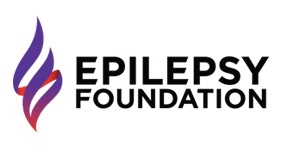Dietary therapy as a treatment strategy employs a dietary regimen, sometimes quite restrictive and disciplined, to help control an illness or medical condition. Weight loss diets to treat obesity are a familiar example but dietary approaches are also used to help manage other conditions, including epilepsy.
The ketogenic diet, when prescribed and monitored by a physician and nutritionist usually in conjunction with anti-seizure medications, has been shown to help control epileptic seizures in some people, particularly in children whose seizures could not be controlled by medication alone.
The special high-fat, low-carbohydrate diet, shares some similarities with the well-known Atkins diet, but ketogenic is more restrictive and demanding, requiring careful measurement of calorie, fluid, and protein intake.
Five levels of high-fat, low-carb diet have been published in medical literature as effective treatments for epilepsy: the classic ketogenic diet (KD), the modified ketogenic diet, the medium-chain triglyceride (MCT) oil supplement diet, a broader diet called the modified Atkins Diet (MAD), and the low glycemic index treatment (LGIT). All of the levels can be effective in controlling epileptic seizures.
The Charlie Foundation has a helpful comparison breakdown of these diets here.
 The name ‘ketogenic’ refers to the diet’s effect of producing ketones in the body.
The name ‘ketogenic’ refers to the diet’s effect of producing ketones in the body.
The Epilepsy Association explains that ketones are formed when the body uses fat for its main source of energy. The typical ketogenic diet, called the “long-chain triglyceride diet,” supplies three to four grams of fat for every one gram of carbohydrate and protein. At least since the development of agriculture, the human body has typically been fed carbohydrates that include sugar, bread, and other grain based flour products like pasta for its fuel.
But because the ketogenic diet is very low in carbohydrates, fats become the primary fuel, which changes the way energy is utilized in the body. The ketogenic diet, very high in fat and low in carbohydrates, is thought to simulate the metabolic effects of starvation by forcing the body to primarily use fat as a fuel source
 While some advocates, according to the Charlie Foundation, suggest that principles of the ketogenic diet can be traced back to the 5th-Century BC texts of Hippocrates, the ketogenic diet was designed in 1924 by Dr. Russell Wilder at the Mayo Clinic. Despite being highly effective in treating epilepsy, it fell out of fashion under the 1940s surge of new anti-seizure medications.
While some advocates, according to the Charlie Foundation, suggest that principles of the ketogenic diet can be traced back to the 5th-Century BC texts of Hippocrates, the ketogenic diet was designed in 1924 by Dr. Russell Wilder at the Mayo Clinic. Despite being highly effective in treating epilepsy, it fell out of fashion under the 1940s surge of new anti-seizure medications.
In 1994 Charlie Abraham’s family started The Charlie Foundation after a complete recovery from daily seizures despite trying all available anti-seizure medications and enduring a futile brain surgery. Charlie started the diet as a toddler and remained on it for 5 years. Now a college student, he remains seizure-free.
In 2006, The Charlie Foundation commissioned a panel of neurologists and dietitians with expertise in the ketogenic diet to create a consensus statement in support of the clinical management of the ketogenic diet and when it should be considered. Children are especially good candidates for the diet owing to their reliance on adults for nourishment and to the nature of a young developing brain.
 The procedure for initiation and management of the Ketogenic Diet in pediatric patients, developed by a team of pediatric epilepsy clinicians at the Yonsei University College of Medicine’s Severance Hospital in Seoul, Korea, was explained in an Open Source article published online April 30 in Clinical Nutrition Research.
The procedure for initiation and management of the Ketogenic Diet in pediatric patients, developed by a team of pediatric epilepsy clinicians at the Yonsei University College of Medicine’s Severance Hospital in Seoul, Korea, was explained in an Open Source article published online April 30 in Clinical Nutrition Research.
The article, “Ketogenic Diet for Children with Epilepsy: A Practical Meal Plan in a Hospital,” coauthored by Eunjoo Lee, Hoon-Chul Kang, and Heung Dong Kim, explained that the Severance Hospital’s Ketogenic Diet (KD) program for epilepsy begins with a one to two week hospitalization, during which the child and parents adapt to the KD. The coauthors wrote that some of the other types of dietary high-fat interventions such as MAD and LGIT have been conducted at the hospital. They noted that since 2010, they have employed the KD, MAD, and LGIT for 802 patients – 489 (61%) for KD, 147 (18.3%) on MAD, and 166 (20.7%) on LGIT. In summary, the KD is suggested for inducing strong ketosis, the MAD is provided for older children who complain about starvation with the KD, and the LGIT is suggested as more comfortable dietary treatment for intractable epilepsy.
According to the report, the researchers shared insights and experiences accumulated during the application of the dietary regimes. They noted that while medical treatment for epilepsy includes antiepileptic medication, epilepsy surgery and vagal nerve stimulation – and even after these interventions 30 percent of epileptic children continue to experience seizures – a ketogenic diet can be an alternative medical treatment for these children. Further reported: approximately 50-60% of children show 50% or more reduction in seizures, 15% of whom become seizure-free after 6 months of KD treatment.
Lee, Kang, and Kim say the most frequently used ratios of fat to non-fat (carbohydrate to protein) in the therapeutic KD diet are 4:1 and 3:1. To maintain strong ketosis state, 4:1 ratio is used. To encourage improved compliance with the KD among children overall, a 3:1 ratio is used. To maintain the 4:1 ratio, a large amount of fat is needed from oils in addition to the fats partially contained in a certain foods. Severance Hospital usually relies on olive oil as a main fat source. To improve the composition of fatty acids, they combine olive oil with sesame oil, perilla seed oil, canola oil and others. They also provide nuts to improve flavor and reduce the amount of vegetable oils.
Of particular interest, the authors note that rice is the staple food of Asian countries, with fat contributing some 20 percent of total calories in regular rice-oriented diet. On the other hand in the KD, fat contributes to 90 percent of total calories, which makes incorporating that proportion of fat into the diet a major challenge to moving the KD forward in Asian countries.
The KD initiation program at Severance Hospital is administered by a team composed of a physician, a registered nurse, and a registered dietitian. As head of the team, the and manages complications of KD, while the dietitian provides nutritional management and maintenance, and the nurse examines the child to monitor tolerance for the diet. The nurse also educates parents or other caregivers about how to continue at home. Frequent communication between caregivers and the KD team are necessary.
The Severance Hospital KD program starts without initial fasting. Fat content in meals is gradually increased over three days.
Before starting the diet, the dietitian evaluates the nutritional status of the child and the patient’s activity level, and growth pattern, and ability to take food.
For meal planning, the dietitian must determine nutritional energy and nutrient distribution requirements. Proteins can be adjusted by the child’s current weight. In the KD menu, carbohydrate-rich foods are eliminated and one food is selected from each food group such as meat, fish, vegetable, milk or fat sources. Amounts for category are calculated in grams and the nutrient content is analyzed for the ratio based on individual requirements.
Because it is a challenge for caregivers to precisely calculate the amounts of each food in grams, the Severance KD team minimizes mistakes by providing a computer program to calculate accurate amounts of foods and nutrient content. After calculation of proportions,the food is weighed on a digital precision scale.
If the child enjoys snacking, treats can be included in the meal planning as long as requirements are met; and because the diet does not provide all vitamins and minerals found in a balanced diet, vitamin and mineral supplements are recommended.
Common complications of the diet are gastrointestinal discomfort such as nausea, vomiting, constipation and diarrhea. High fat diets can also affect serum levels of lipid profiles than can result in dyslipidemia such as hypertriglyceridemia and hypercholesterolemia. The KD diet may continue for 2-3 years in order to achieve seizure control, and late onset complications of can include infectious disease, osteopenia, and kidney stones, so diet patients KD need frequent monitoring. Eventually the ratio of fat and non-fat will be decreased slowly toward a normal diet over a period of 2-3 months.


